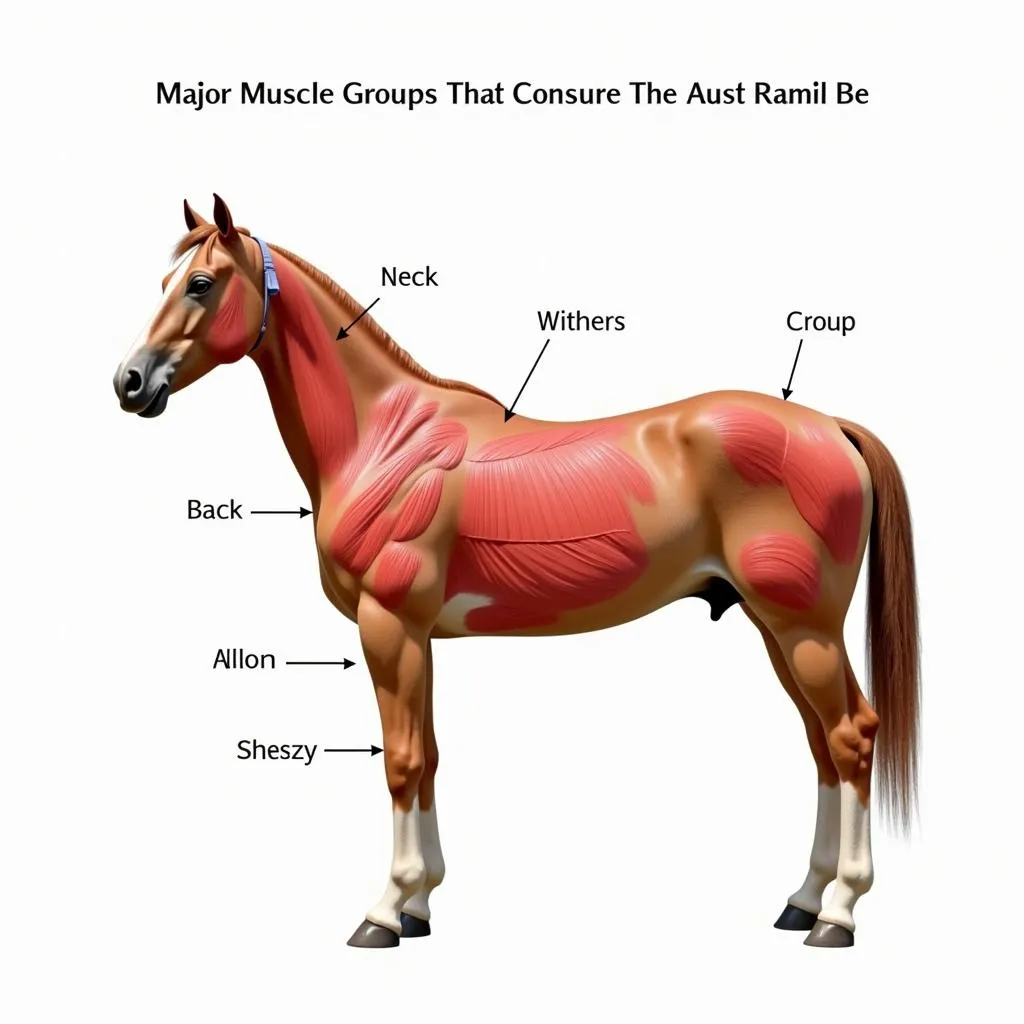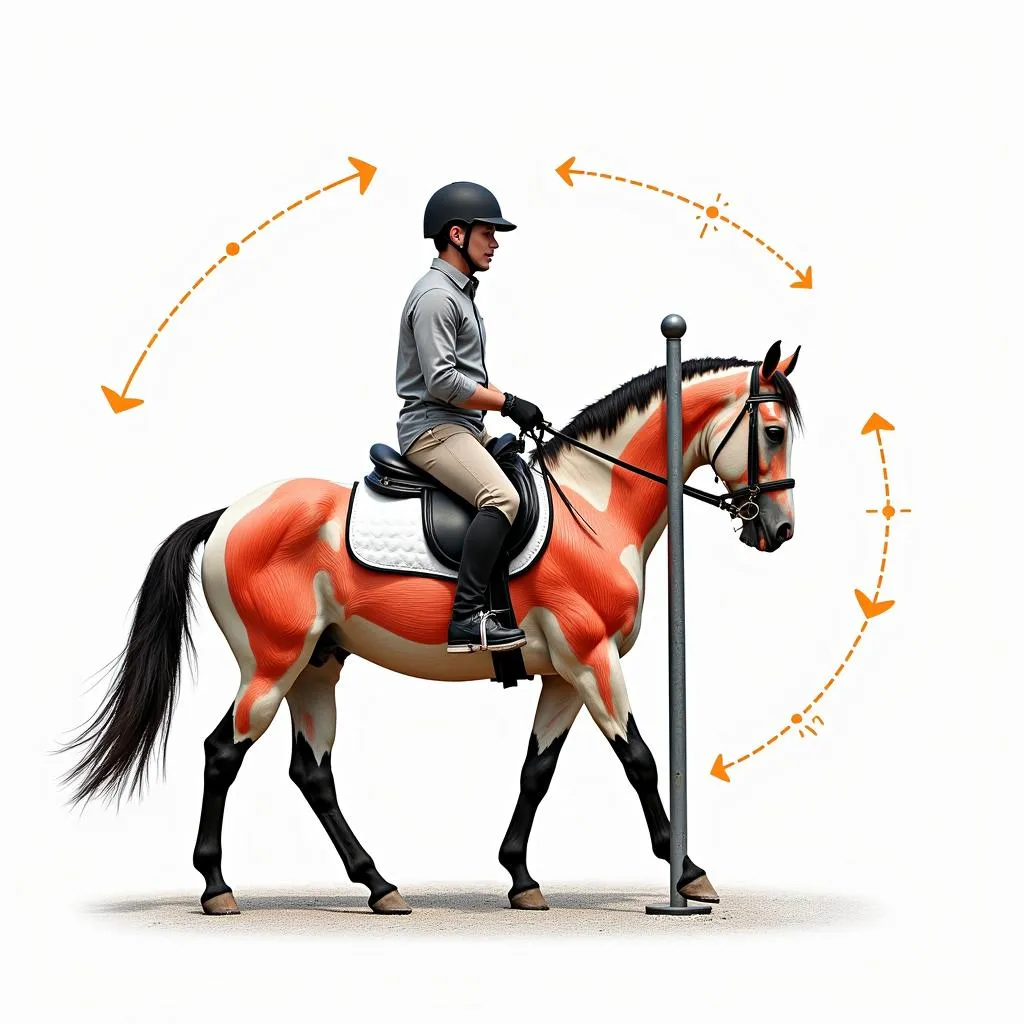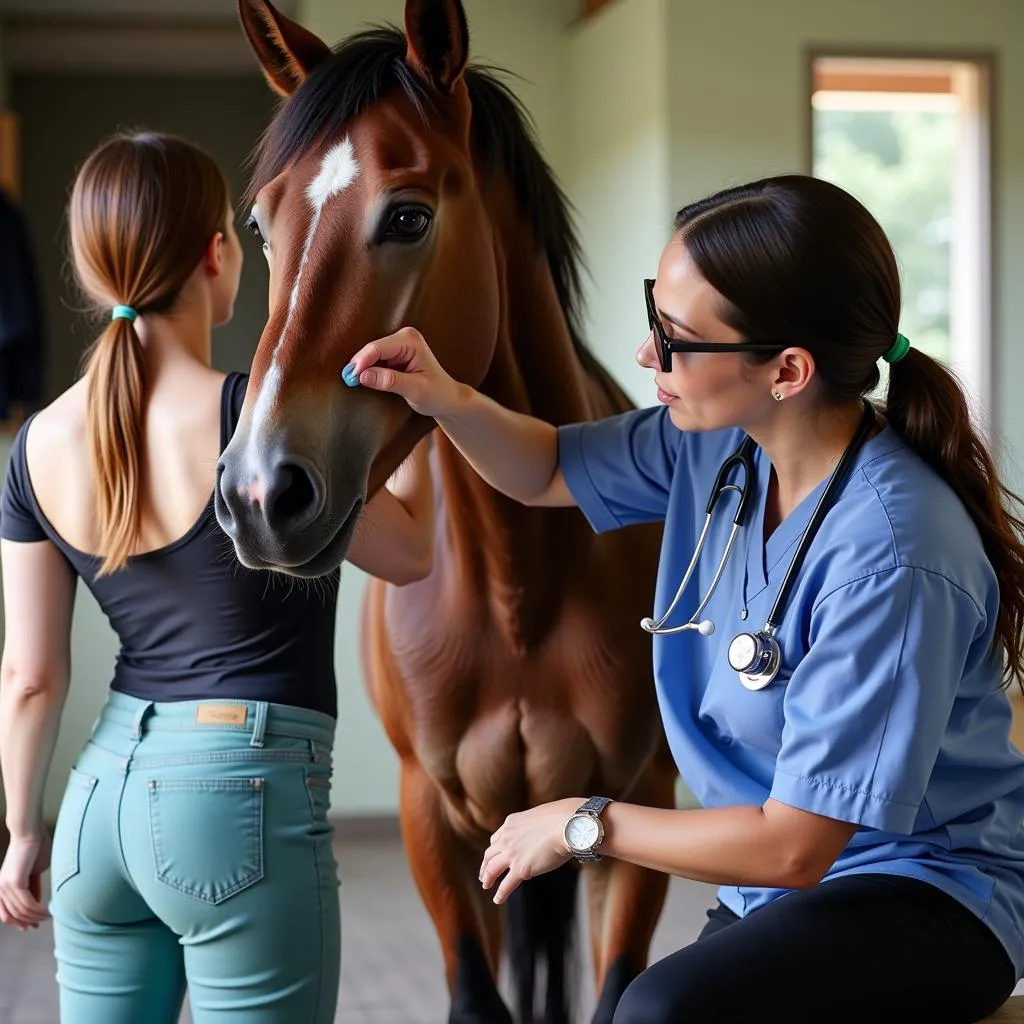Building topline is a fundamental goal for any horse owner aiming to improve their equine partner’s overall health, performance, and aesthetic appeal. Topline, in equestrian terms, refers to the group of muscles that extend from the back of the horse’s ears, along the neck, over the withers, and down to the croup. A well-developed topline is not merely a visual indicator of good health, it’s a testament to correct training, balanced nutrition, and overall well-being.
A horse with a weak topline, often exhibiting a dipped back or underdeveloped neck muscles, is more prone to injuries, suffers from decreased performance, and may experience discomfort. The good news is, regardless of your horse’s breed, age, or current physical condition, building a strong topline is an achievable goal with a dedicated approach.
Understanding the Importance of a Strong Topline
The topline muscles play a vital role in a horse’s ability to move correctly and carry a rider with ease. These muscles provide:
- Balance and Stability: A strong topline helps the horse maintain balance under saddle and navigate different terrains effortlessly.
- Power and Propulsion: The topline muscles are essential for generating power from the hindquarters and propelling the horse forward.
- Spinal Support and Flexibility: A well-developed topline provides crucial support to the horse’s spine, protecting it from strain and injury.
- Rider Comfort: A horse with a strong topline is more comfortable for the rider, as the back is better equipped to carry the rider’s weight without strain.
 Horse Topline Anatomy
Horse Topline Anatomy
Factors Affecting Topline Development
Several factors can influence a horse’s topline development. Understanding these factors is key to creating an effective plan:
- Genetics: Some breeds are naturally predisposed to having stronger toplines than others.
- Age: Young and growing horses are still developing their musculature, while senior horses may experience muscle loss.
- Nutrition: A balanced diet rich in protein, vitamins, and minerals is essential for muscle growth and repair.
- Training: Correct training methods that encourage the horse to use its back and engage its core are crucial for building topline.
- Saddle Fit: An ill-fitting saddle can hinder muscle development and even cause pain and injury.
- Overall Health: Underlying health conditions can affect muscle development and lead to muscle wasting.
Effective Strategies to Build Topline on a Horse
Building a strong topline requires a multifaceted approach. Here are some proven strategies to help you achieve this goal:
1. Implement Targeted Exercises
Incorporating exercises that encourage the horse to engage its core and lift its back is essential. Some effective exercises include:
- Stretching: Encourage your horse to stretch its neck down and forward, reaching for a treat or grass. This helps to lengthen the topline muscles.
- Long and Low Work: Riding your horse in a long and low frame, where the head is slightly lowered and the back is rounded, encourages engagement of the abdominal muscles and strengthens the back.
- Transitions: Frequent transitions between gaits, such as walk-trot and trot-canter, help to activate different muscle groups and build strength.
- Hill Work: Riding uphill forces the horse to engage its hindquarters and use its back muscles for power.
- Pole Work: Navigating poles on the ground encourages the horse to lift its legs higher and engage its core muscles.
 Horse and Rider Practicing Pole Work
Horse and Rider Practicing Pole Work
2. Optimize Nutrition for Muscle Growth
Adequate nutrition is paramount for muscle development. Ensure your horse’s diet includes:
- High-Quality Protein: Protein provides the building blocks for muscle growth and repair. Alfalfa hay, soybean meal, and flaxseed are good protein sources.
- Essential Fatty Acids: Omega-3 fatty acids, found in flaxseed and fish oil, support muscle function and recovery.
- Vitamins and Minerals: Adequate levels of vitamins E and C, along with minerals like selenium and copper, are crucial for muscle health.
Tip: Consult with an equine nutritionist to formulate a balanced diet tailored to your horse’s specific needs.
3. Prioritize Saddle Fit
An ill-fitting saddle can impede muscle development and cause discomfort.
- Schedule a Professional Saddle Fitting: An experienced saddle fitter can assess your saddle’s fit and recommend adjustments or a new saddle if necessary.
- Regularly Check Saddle Fit: Remember, a horse’s back can change over time due to muscle development, weight fluctuations, or age.
4. Address Underlying Health Issues
If your horse is struggling to develop topline despite your efforts, there might be an underlying health issue hindering progress.
- Consult with your Veterinarian: A thorough veterinary examination can rule out any medical conditions that may be impacting muscle development.
 Veterinarian Examining a Horse
Veterinarian Examining a Horse
Building Topline Takes Time and Consistency
Building a strong topline on a horse is a gradual process that requires patience, consistency, and a holistic approach. Remember these key points:
- Start Slowly: Gradually increase the intensity and duration of exercise to avoid overwhelming your horse.
- Listen to Your Horse: Pay close attention to your horse’s body language and signs of fatigue.
- Consistency is Key: Regular exercise and a balanced diet are crucial for sustained results.
- Celebrate Small Victories: Acknowledge and reward your horse for its efforts and progress.
By implementing these strategies and working in partnership with your horse, you can develop a strong, healthy, and well-muscled equine partner.
FAQs about Building Topline on a Horse
1. How long does it take to build topline on a horse?
Building topline is a gradual process, and the time frame can vary depending on factors such as the horse’s age, breed, starting condition, and the consistency of training and nutrition. Generally, noticeable improvements can be seen within a few months, but it can take a year or more to develop a truly impressive topline.
2. Can I build topline on an older horse?
Yes, while it may take longer than with a younger horse, it’s certainly possible to build and maintain topline on senior horses. The key is to tailor the exercise program to the horse’s age and physical capabilities, focusing on low-impact exercises, and ensuring adequate protein intake to support muscle maintenance.
3. Are there any supplements that can help build topline on a horse?
While supplements cannot replace a balanced diet and proper training, some supplements can support muscle growth and recovery. Consult with your veterinarian or an equine nutritionist before adding any supplements to your horse’s diet.
4. What are some signs of a horse struggling to develop topline?
Difficulty maintaining balance under saddle, reluctance to engage the hindquarters, a dipping back, muscle atrophy, and a general lack of energy can all be signs of a horse struggling to develop topline.
5. How can I prevent my horse from losing topline?
Consistency is key to maintaining a strong topline. Continue with regular exercise, even during the off-season, and ensure your horse receives a balanced diet year-round.
For personalized guidance and support in building your horse’s topline, contact Justus Horses USA. Our team of experienced equine professionals is dedicated to helping you achieve your equestrian goals.
Need help building your horse’s topline?
Contact Justus Horses USA today!
Phone: 0772127271
Email: [email protected]
Address: QGM2+WX2, Vị Trung, Vị Thuỷ, Hậu Giang, Vietnam.
Our team is available 24/7 to answer your questions and provide expert advice.